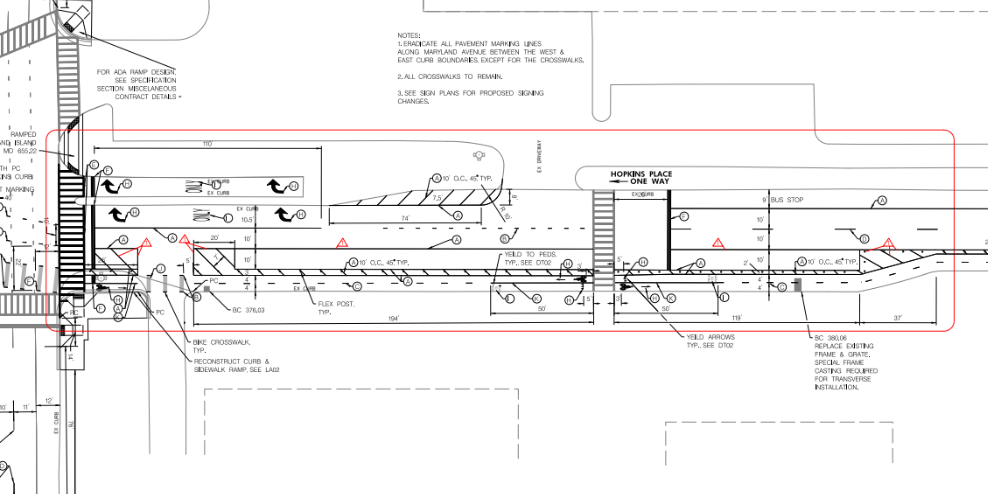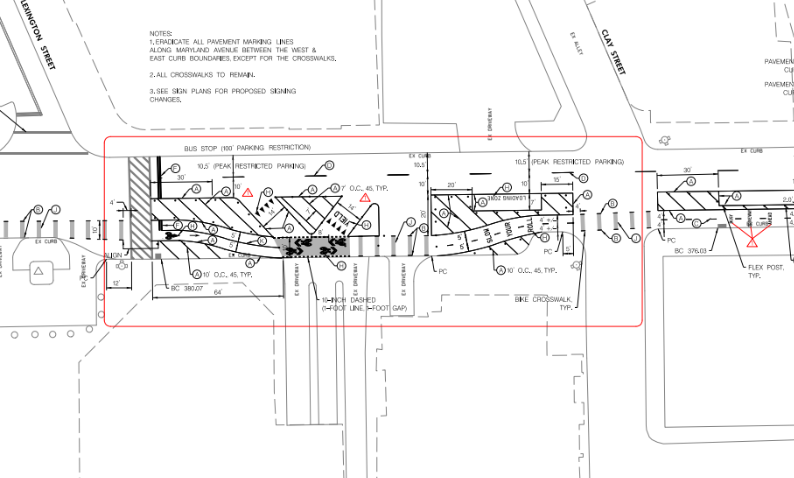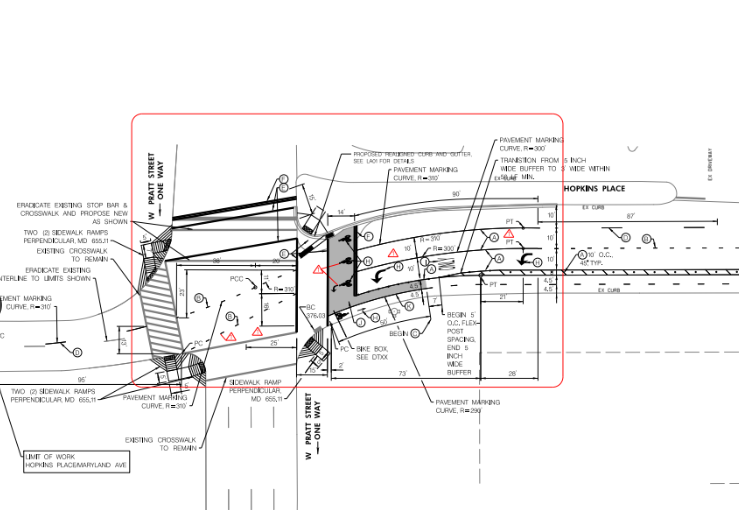The 2017 Separated Lane Network Plan. To stay on schedule, everything in Purple should be constructed this year, but none of it will be.
You read that right.
It’s been just over a month since the passage of Baltimore Complete Streets, the nationally recognized Complete Streets ordinance that legally mandates Baltimore design streets through an equity lens, and prioritize pedestrians and bicyclists to the greatest extent possible. Baltimore City Department of Transportation was required to provide an update to the Baltimore City Council Land Use and Transportation Committee on day 30 after enactment, but no such update came.
Instead, we were greeted with the FY2020-2025 Capital Improvement Program, the city’s latest budget documents. Traditionally, Baltimore City DOT includes line item 508-019 Citywide Bike Infrastructure, which details proposed funding for bike improvements over the following six fiscal years, breaking down revenue sources by general/local funds, state grants, and federal highway grants and allocations.
FY2019-2024 CIP showing the line item for Citywide Bike Infrastructure. It was removed in this year’s CIP.
The 2017 Separated Lane Network Plan, adopted by the Baltimore City Planning Commission under Mayor Pugh, specifically calls for $1,000,000 per year of General Funds for five years. By leveraging Maryland Department of Transportation Bikeways and Federal Transportation Alternatives Program grants that require a local match, this approximately $5 million in local dollars could build the entire Separated Lane Network in five years. Building this network would connect 85% of Baltimoreans to low stress bicycle infrastructure. It’s one of the lowest cost, highest return bike plans in the country.
2017 Separated Lane Network construction timeline, budget, and revenue sources.
It’s pretty simple. Win big grants with small matches of local dollars. Build 17 miles of high quality separated and supporting infrastructure per year for five years. End with one of the best networks in the country.
Instead, we have no money for design and construction this year. Baltimore City Department of Transportation will tell you they plan on building 17 miles of infrastructure in 2019, and that everything’s fine. But let’s take a look at what that infrastructure actually is:
BCDOT’s proposed timelines for bike facilities
Every project listed for “Proposed 2019” is a prior year project. Every single one of these projects was already counted in lane mile totals in 2017 when the Separated Lane Network plan was adopted, because all of these projects were supposed to have been constructed by then. Delaying projects by anywhere from 3-7 years doesn’t mean you get to count them again.
The “Proposed 2020-2022” projects include MLK Jr, Eutaw Street, 20th Street, and Baker Street. If you refer back to the Separated Lane Network Plan map at the top, you’ll see these projects are supposed to be completed this year, in 2019, not proposed for 2022, the year the entire network plan is supposed to be built.
In short, Baltimore City Department of Transportation has budgeted zero dollars of new bike design and construction money for the next six years. The projects they’re double counting as mileage are projects that were already counted in prior years. And the new projects they’re proposing are coming years late, if at all since they haven’t promised funding alongside them.
We will be testifying at the Baltimore City Planning Commission on Thursday, January 10th about this disparity between city-adopted plans and the Capital Improvement Budget.
Over the next few weeks, we’ll also highlight some planned and ongoing infrastructure projects that are costing or will cost the city millions of dollars while making streets less safe for people walking, biking, and taking public transit.
Baltimore City Department of Transportation knew this Complete Streets ordinance was coming. They knew it was going to pass. This budget was an opportunity for them to show that they were making preparations to right their ship, but instead they continue to fire cannons at their own sails.












